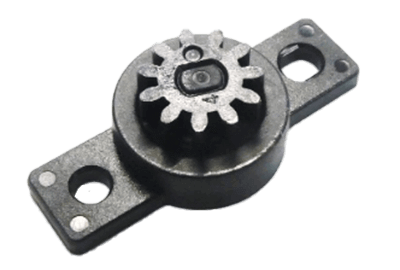What Is a Rotary Damper?

A rotary damper is a device often installed in parts that close, such as piano covers, to ensure they close safely and slowly. It helps in controlling the speed of closing, making the process more secure and quiet.
Without a damper, doors or lids close at varying speeds based on the applied force, which can be unsafe. A rotary damper ensures a nearly constant closing speed, regardless of the force, enhancing safety and reducing noise.
Uses of Rotary Dampers
Rotary dampers are commonly used in furniture doors, vending machine exits, measuring instruments, and other areas where sudden movements could be hazardous. They are particularly beneficial for materials like glass that are impact-sensitive, as the dampers minimize the impact force, thus reducing the risk of damage. Additionally, they contribute to a product’s aesthetic appeal and user experience.
Principle of Rotary Dampers
Rotary dampers operate using a highly viscous liquid, like silicone oil. When a rotor turns within this liquid, it encounters resistance, generating a braking torque. The resistance increases with the rotor’s speed, allowing for stronger braking torque at higher speeds.
This mechanism, however, is not perfect, as the speed can vary slightly with different forces. Moreover, the liquid’s viscosity can change with temperature, leading to variations in the closing speed during different seasons. Some rotary dampers feature a built-in clutch, enabling them to produce braking torque in only one direction.